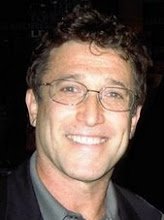Smoking
When I wrote my book, Cigarette Seduction, on how leading tobacco companies had developed their brands, most publishers and other assorted experts responded along the lines of: "Cigarettes aren't that meaningful" and
"tobacco guys aren't that smart.
But the recent news about the insula, a mysterious part of the brain that controls the smoking practice and other mind-body relationships should warrant a second look. When the insula is disabled, as in the case of a brain damaged smoker, people are reported to lose their desire for smoking as well as sex and some other drives.
Apparently, the tobacco guys knew more than we realized: that smoking runs deep and the brands have a kind of mythological value, something akin to the religious possession you find in trance practices common in ancient religions. In fact, the smart players in the tobacco industry have long been influenced by deeply psychological researchers. When A.A. Brill translated Freud¹s works into English and become his disciple in the 1910¹s, it didn't take long for Lucky Strike to hire him in the 1920's. (It took a little arm twisting from their PR guy, E.L. Bernays, coincidentally Freud¹s nephew, but when he analyzed cigarettes as being perceived by emancipated women as a torch of freedom, they paid attention. Still do.)
When Dr. Alton Ochsner first noted a correlation between smoking and cancer in the 1940's, another headshrinker, Ernest Dichter, a psychoanalytically-trained psychologist appeared. He told tobacco execs that smoking was a psychological and not a health product. So stop saying things like, "not a cough in a carload" or "more doctors smoke Camel" and soon went about doing depth research into their brands, largely focusing on the mindset of the teen starter.
When Malrboro was launched, the company boasted of spending $200,000 in psychological research. They used Louis Cheskin to run near-subliminal testing of the packaging concepts. Cheskin, whose shape and color consultancy survives him today, was so proud of the work he did, he wrote a book called "How to Predict What People Will Buy." The back cover features him and the later chairman of Philip Morris, George Weissman, smoking a couple of cigarettes.
The color of the filters, typically "cork"-colored for men and plain white for women, their length and even the firmness or softness of their packaging tells a story about the smoker. Some cultures favor a fighting archetype, so the in the US 70% of white males initiate with Marlboro and have been for around 40 years (Cheskin¹s research identified a medal-like image as being key to its success). Other cultures like Japan and China go with Peace and Prosperity brands often focusing on some type of implied Ch'i quotient. In the UK class and yearning for the lost empire are themes and so on.
Most important though, are two things: starting as teen is not just foolishness, it is actually a modern form of tribal initiation and has a profound effect on their adult lives. Sadly, there are few safe alternatives and quitting often requires an understanding of the process.
The other point, which has non-smokers endlessly clucking, is why do otherwise rational people, who know so much about the mortal dangers, keep on smoking. Especially when nicotine leaves the body in about 3 days and there is any number of pills, patches and support groups to help them along.
The answer, and the mysterious insula seems to support this, is that to them, the magic of smoking seems more powerful than its potential to do physical harm.


No comments:
Post a Comment